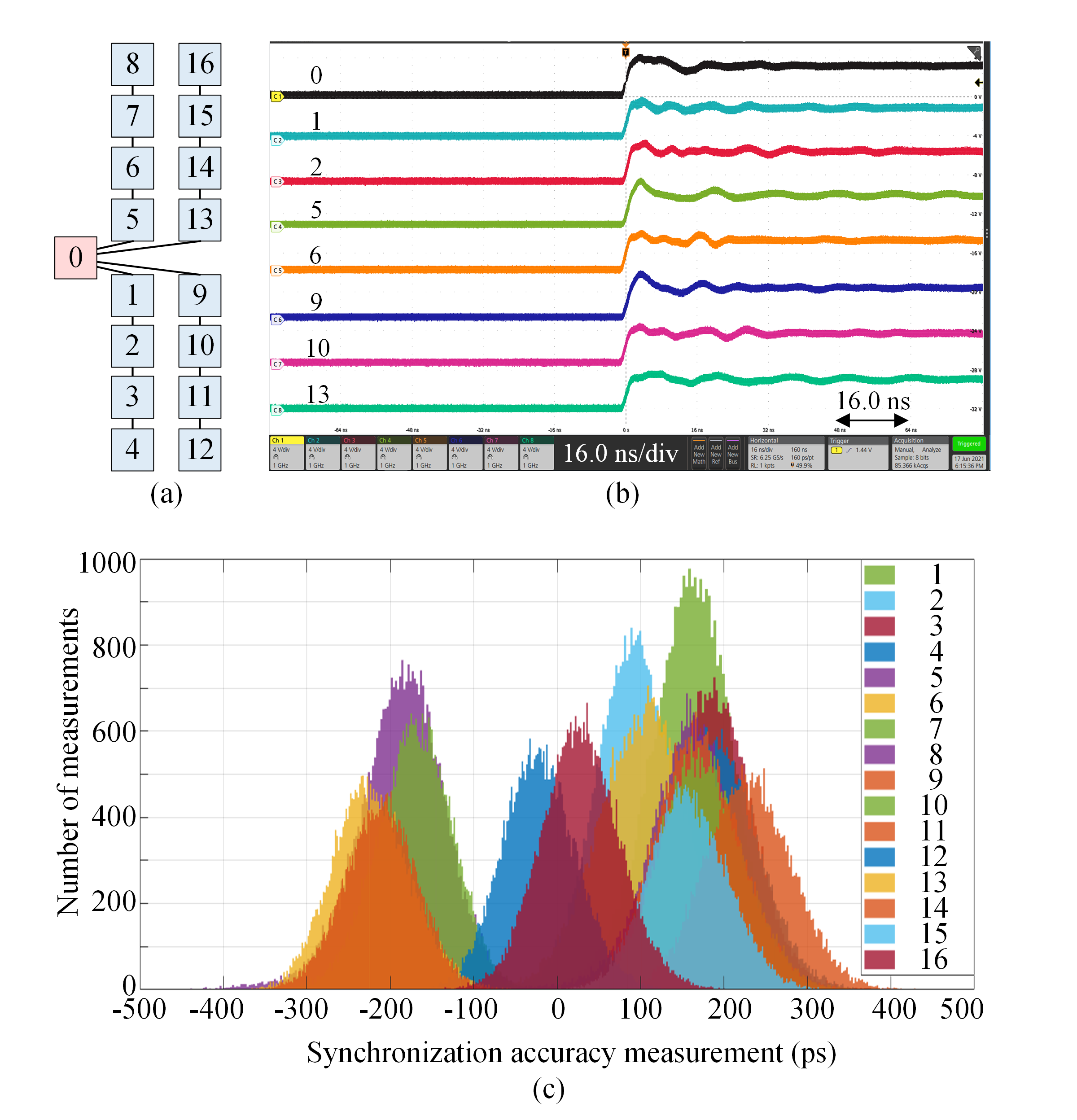LIBRARY
PESNet 3.0 for Large-Scale SiC Modular Power Converters: A White-Rabbit-Based Communication Network With Sub-ns Synchronization Accuracy

The White Rabbit technology, originally developed for the Large Hadron Collider accelerator chain at the European Organization for Nuclear Research, has been embedded in PESNet 3.0 inter-cell layer to achieve a sub-ns synchronization accuracy for distributed power conversion systems for the first time. PESNet 3.0 inter-cell layer contains the main controller and cell controllers. They share the same hardware using the high-end Xilinx 7000 as the control device, and are communicated in a tree topology with 5 Gbps data rate. Sub-ns synchronization accuracy is achieved by utilizing a PLL on the controllers to lock both the frequency and phase of the local time with each other.
In order to verify the PESNet 3.0 inter-cell layer synchronization performance, a communication network shown in Fig.1(a) is built. A local time counter is generated based on each controller's own clock. A square wave based on the local time counter is utilized to measure the synchronization accuracy as shown in Fig.1(b). The channel-to-channel delay measurement data is further extracted from the oscilloscope as shown in Fig.1(c). Setting the main controller as the benchmark, all the measurement data for the 16 cell controllers are within ±0.5 ns, which verifies the sub-ns synchronization accuracy.






















































































